

Saxophone Survival Guide
Everything a saxophonist needs to get started, and keep playing. Whether you’re a student just starting out, or an educator shaping the next generation of saxophone masters, this all-in-one guide offers essential tips, tools, and gear for long-term success.
Reed Selection
Match the reed to the player’s level and tone goals.
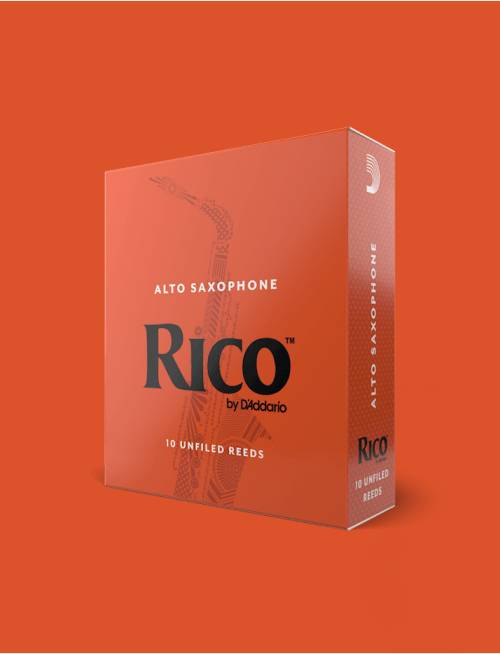
Rico Reeds
Rico reeds are a trusted choice for students and educators. With a thinner vamp, they make it easier to produce a clear tone from the start. Rico reeds are more consistent than ever, thanks to improvements in cane and manufacturing.
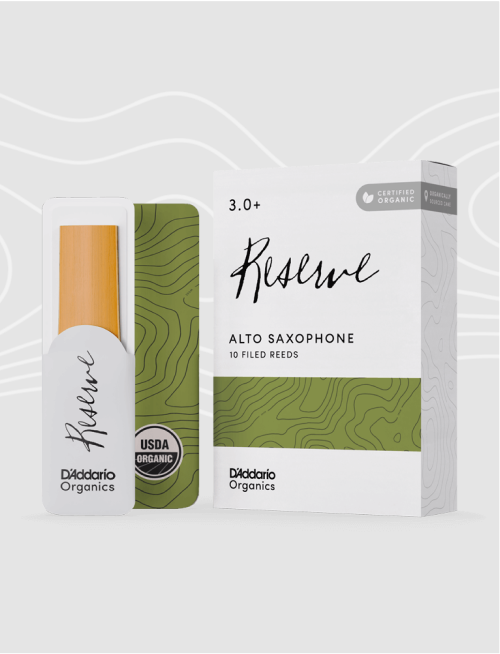
Reserve Reeds
D'Addario Reserve reeds are designed for advancing and professional players. Reserve is cut from a thicker reed blank that delivers a rich, warm, complex tonal quality.
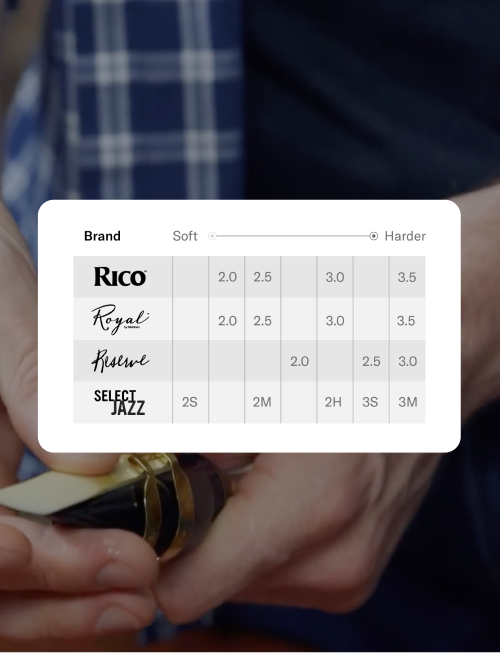
Choosing The Right Strength
Students should increase reed strength gradually as they develop. Softer reeds are easier to play at first, while harder reeds help with tone and articulation in the upper register.
Reed Selection Tips
- Pick reeds based on sound and response. If a reed feels too hard or the tone is fuzzy, try a softer strength. If it feels too easy or the tone lacks depth, go harder.
- Check the age of the reed. Old reeds lose strength and may feel too soft even if they were once appropriate.
- Place the ligature securely on the smooth part of the reed, beneath the vamp and/or file mark.
- When testing a reed, aim for a small sliver of black mouthpiece tip to show above the reed. If it’s too easy, raise it slightly. If it’s too hard or buzzy, lower it slightly.
Finding the Right Mouthpiece
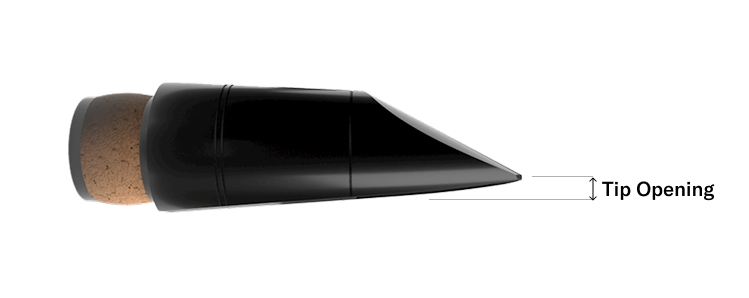
Mouthpieces 101
Mouthpiece facing refers to the curve that extends away from the reed. This curve is often described by the tip opening: the space between the tip of the reed and the tip of the mouthpiece.
- Mouthpieces with a close facing (smaller tip opening and gentler curve) pair well with harder reeds and create less resistance, making them easier to play for beginners or for players who prefer to produce workable resistance from a stronger reed strength.
- Mouthpieces with an open facing (larger tip opening and steeper curve) offer greater flexibility and more resistance, and typically work best with softer reeds. However, they might require more control from the player.
D'Addario Mouthpiece
Reserve mouthpieces are precision-milled from premium hard rubber, resulting in unparalleled mouthpiece-to-mouthpiece consistency. Reserve Alto Saxophone mouthpieces are available in three resistance levels, with the D145 model being a favorite for beginning players and the D155 model being a favorite for advanced players.
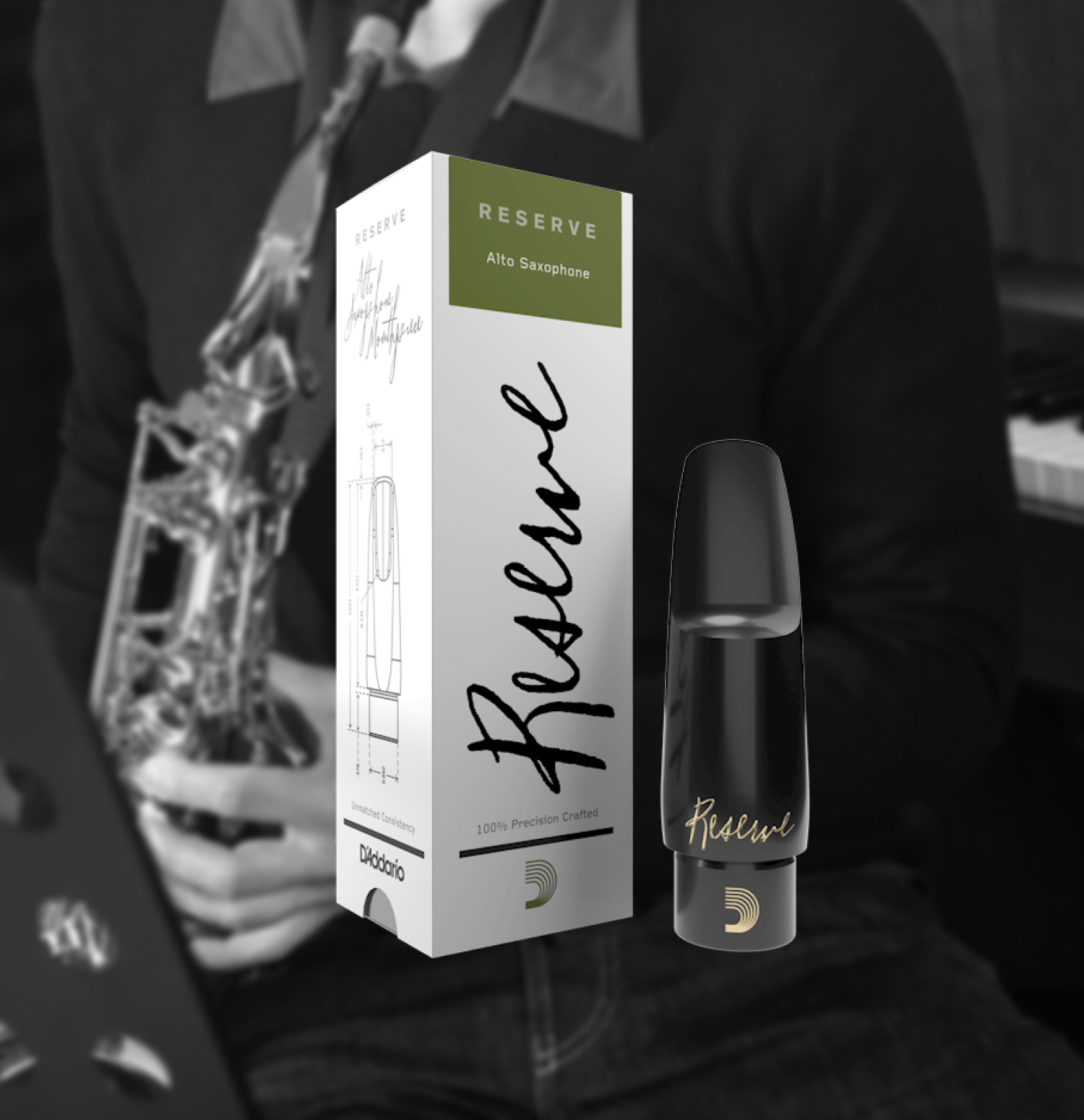
Comparison Charts
Use the Resistance and Strength Comparison Charts to find your ideal setup.
Mouthpiece Comparison Chart Reed Strength Comparison Chart
Saxophone Care Tips
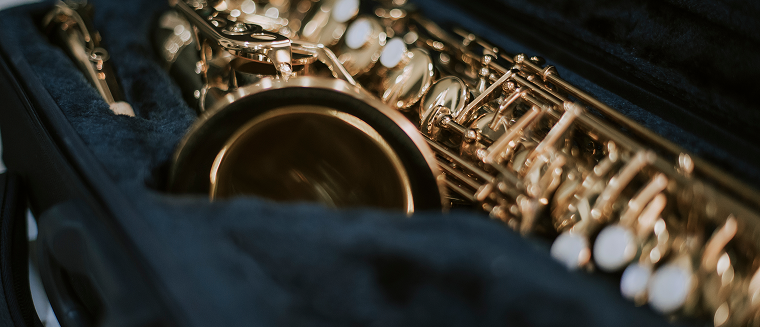
- Use a mouthpiece patch and cap to prevent teeth marks and damage.
- Swab the inside regularly to remove moisture and prevent mold or cracking.
- Replace worn reeds early to maintain intonation and tone.
- Store your clarinet properly using a case with breathable padding.
- Store your reeds in a D'Addario Reed Guard or Reed Vitalizer case - never on the mouthpiece - to increase their lifespan and prevent warpage and damage.
- Avoid eating or drinking sugary beverages before playing. If you can't avoid it, brush your teeth before you play or wash your mouth out with water.
- Clean your mouthpiece regularly—swabbing can gradually wear down the inside of your mouthpiece over time and alter the mouthpiece's feel and sound. Swab with care and discretion. At D'Addario, we recommend cleaning your mouthpiece at the kitchen sink with mild dish soap and lukewarm water. For hard-to-reach areas and sharp edges inside the mouthpiece, use cotton swabs to gently remove buildup.
Recommended Accessories
Give yourself or your students every advantage.
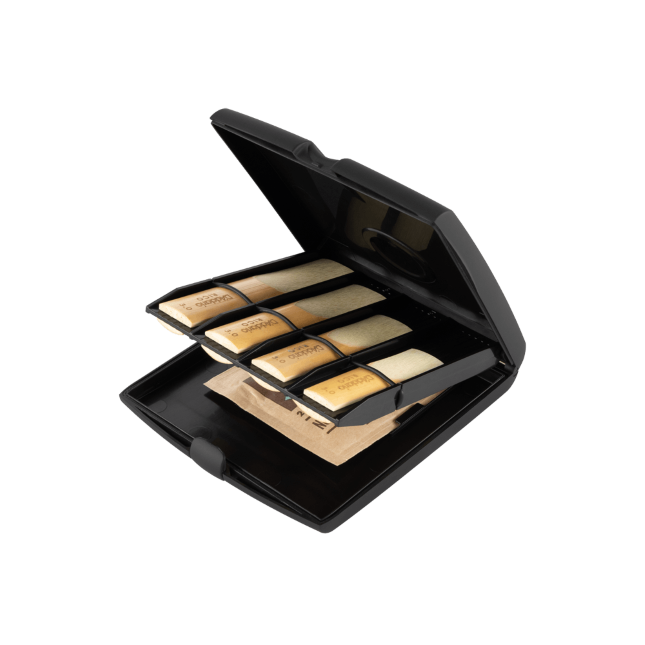
Teaching Strategies for Beginners

Help your students build great fundamentals with proven exercises and analogies.
- Mouthpiece Only
Have beginning students warm up daily with the mouthpiece and barrel to focus on fundamentals. If their embouchure, tongue position, and air speed is correct, they will produce a concert F#. - Embouchure Wheel
For students struggling to produce a full sound, roll a swab into a ball and insert tightly into the clarinet bell. Ask them to play a passage and try to push the swab out with their air. While they’re playing, pull the swab out of the bell and the student should be producing a nice, full sound!

- Tumbleweed Analogy
To teach airflow, ask students to picture a tumbleweed inside the mouthpiece. Weak, unfocused air may move the tumbleweed, but won’t make it spin. Fast, focused air catches and spins it forward. Encourage students to visualize the tumbleweed traveling all the way through the body of the saxophone as they play. - Darth Vader Trick
For low notes, it’s important that students maintain an open throat and relaxed jaw. A helpful exercise is to have them inhale deeply, then exhale slowly while making a “hoooo” sound, similar to Darth Vader’s breathing. This reinforces proper voicing and encourages warm, supported airflow. - Neck Strap
The neck strap should be adjusted so that, when seated, the saxophone rests at mid-thigh and the mouthpiece naturally reaches the mouth without the student needing to tilt their head. Straps made from non-stretch materials are ideal to prevent sagging, which can negatively affect posture and tone. - Paper Trick
A simple paper trick can show students how much mouthpiece to take in. Insert a piece of paper between the reed and mouthpiece to find the contact point, then mark that spot lightly on the reed. This gives students a clear reference for lip placement. You can also cut a mouthpiece patch in half and place it farther down as a tactile guide. - Voicing Check: “A” Trick
To check embouchure and tongue position, have students play middle “A” and flick the octave key. The pitch should jump up and return smoothly. If it stays high, the student may be biting or raising the tongue too much. If it doesn’t shift, the embouchure may be too loose or the tongue too low. Both are signs that too much mouthpiece may be in the mouth.

Ready to Build the Perfect Saxophone Setup?
Browse our full clarinet collection or download the Saxophone Survival Guide PDF to keep handy during lessons.






